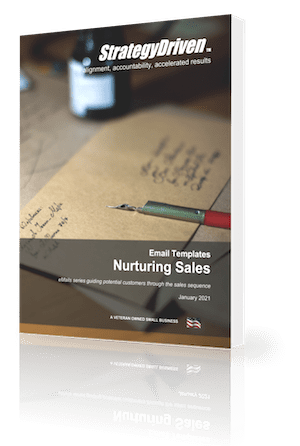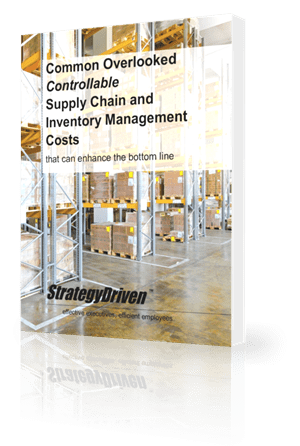5 Ways Smart Startup Founders Strategically Manage Operating Capital
According to the Bureau of Labor Statistics, 20% of businesses fail in the first two years. By 15 years in, only 25% of new businesses survive.
You may feel like things are stacked against your startup, but with the right strategy, you can beat out the odds and be one of the few who remain 15 years down the road.
And with financing being one of the primary reasons startups go under, the right strategy needs to involve improving upon your operating capital.
What Is Operating Capital?
Sometimes called “working capital,” operating capital is the sum of a business’s current assets minus its current liabilities. Assets include cash, accounts receivable, and inventory, while liabilities include accounts payable, employee wages, taxes, and interest accrued.
Working capital is necessary to fund a company’s operations and pay for expenses as they arise. When working capital falls into the negative, debt can build quickly. Startups can find themselves in the red long enough that they simply cannot financially recover.
After all, the most common reason startups fail is because they run out of money.
5 Tips to Strategically Manage Operating Capital
Tired of living on the brink? If it’s time to get your financial house in order, here’s how to get started.
1. Automate Your Accounting
As a startup, you always need to be thinking of the future.
Sure, your accounts payable team may be able to operate manually now, but as you grow, automation can improve their processes and give them back valuable time. When you automate your accounts payable, manual tasks like processing, validating, approving, and paying invoices become easier.
Automating accounts payable also improves invoicing processes and data, which in turn improves transparency in the money flowing in and out of your company. That transparency can help you maintain a better understanding of your current working capital and reduce the risk of human error hampering your operating capital expectations.
2. Look for Opportunities to Reduce Taxable Income
Although tax rates vary by state, the average small, growing business can expect to pay nearly 20% of its annual gross income in taxes. Minimizing your taxable income can help you reduce costs and keep your operating capital positive.
One technique is to capitalize your software development costs. When you capitalize your software costs, you reduce your taxable income by spreading out the cost over the period in which you can expect to generate revenue from the asset.
3. Improve Your Cash Flow Forecasting
Cash flow is a big part of maintaining your operating capital, which is why cash flow forecasting is a helpful technique to ensure you can prepare for the future. Cash flow forecasting relies on data collected and analyzed in regard to the inflow and outflow of cash in your company.
Cash flow forecasting software can automate this process by analyzing data from your finances to provide you with a peek into your future at the current rate of your income and expenses.
4. Manage Your Inventory
If your startup sells physical products, inventory may be one of the biggest stressors on your operating capital.
It’s easy to fall into a pattern of holding onto too much inventory. After all, when you’re just getting started, you don’t want to run out of inventory, especially if you suddenly start receiving more attention from potential customers than ever.
Track and analyze inventory data, regularly audit your inventory for what’s selling and what isn’t, and utilize inventory management tools that can use your data to enable you to forecast how much inventory you’ll need. These tactics can help you keep your inventory from eating up your operating capital.
5. Stay On Top of Receivables
Another key part of your operating capital in addition to accounts payable is of course accounts receivable.
However, this part of the equation can be somewhat nebulous. Your accounts receivable can help tell you how much money you expect to have at a particular time. But sometimes expectations aren’t met.
Staying on top of accounts receivable ensures that you’re getting paid when you’re supposed to. So while you automate your accounts payable, it may also be a good idea to invest in accounts receivable automation, as well.
Especially as your business grows, manually tracking down money owed can be a time-consuming process and filled with the potential for human error to cause someone to miss a payment that the company should have received. Automating this process helps businesses collect payment on time and boost operating capital.
Keep Working on Your Working Capital
Your operating or working capital is a relatively simple formula—your assets minus your liabilities. But when you get into the details, you’ll find that there are a lot of components to your operating capital and many steps you can take to give that capital a boost.
Automation, including automating your accounts payable and accounts receivable, can increase transparency and help you locate more places to improve the value of your assets. Forecasting your inventory needs and cash flow can enable you to prepare for future costs. Reducing taxable income can also give you a boost down the road when taxes are due.
Don’t be another statistic. Create the right strategy to transform operating capital into a tool that helps your business stand the test of time.
About the Author
Jacqueline Gualtieri is a writer and editor whose work has appeared in The Huffington Post, Insider, and The Slowdown. In addition to writing, she works as a digital media consultant and content marketer, driving online traffic for her clients. She’s always looking to advance her skillset and believes strongly in the early adoption of new technology.














Leave a Reply
Want to join the discussion?Feel free to contribute!